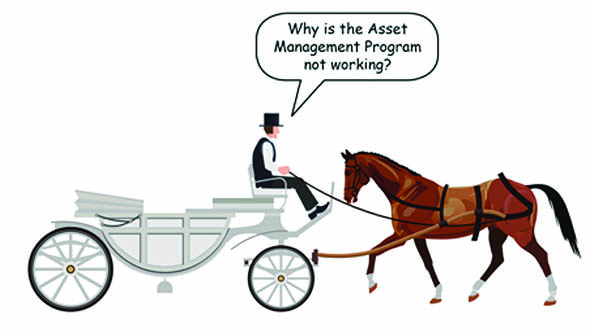
BLOG
—
Asset Data Maintenance:
Is Your Horse in Front of Your Cart? Part 2
Another data discussion?
Data isn’t one of the flashier aspects of asset management, but it is one of the most important. Many organizations embark on asset management journeys without having taken a thorough look at their data. How organizations approach data is critical not only to specific asset management solutions, but also to the program’s long-term outcomes.
As consultants, we meet clients at every stage of the asset management journey. Some may have spent years assessing their data with multidisciplinary teams, while others use their asset management projects as the impetus for bringing departments together to evaluate the state of their assets. They all have three things in common: people, processes and technology.
People
Who should be involved in maintaining asset data and systems? Can the organization map the asset data life cycle all the way from commissioning to retirement, and is the time lag between commissioning and data availability acceptable? Is the staff responsible for maintaining or rehabilitating the assets able to validate and/or update the data?
Processes
When it comes to implementing an asset management system, we always advise our clients to make sure they understand their data. But how exactly do you take care of that data? And when in the process should you address it? The short answer—continuously. During the asset’s life, is the information collected important to measuring its performance? Does this process vary to a large degree across the organization?
Technology
Last and not least, what technology is in place today? Is asset information in a single place for the enterprise, or is it maintained across a variety of maps, spreadsheets and databases? Is there a desire to leverage technology to improve data maintenance processes and validity?
The arguments for making sure you know your as-is data state and the goals of your to-be data state are plentiful and range from capturing institutional knowledge to preventing delays and scope creep to obtaining the desired return on investment. Regardless of an organization’s chosen path toward understanding asset data, the most important element is simply to start.
Remember,
- Are the right people in place to maintain the data and systems?
- Is the right information being collected throughout the asset life cycle?
- Is the right technology in place to achieve success?

Christina Martinez
Christina is a Woolpert Project Manager with over 18 years of experience implementing GIS and asset management solutions for utilities and municipalities.

Jeff Pesler
With over 15 years’ experience providing GIS and asset management consulting services, Jeff helps implement solutions that achieve organizational visions while meeting stakeholder needs.
Share this Post


